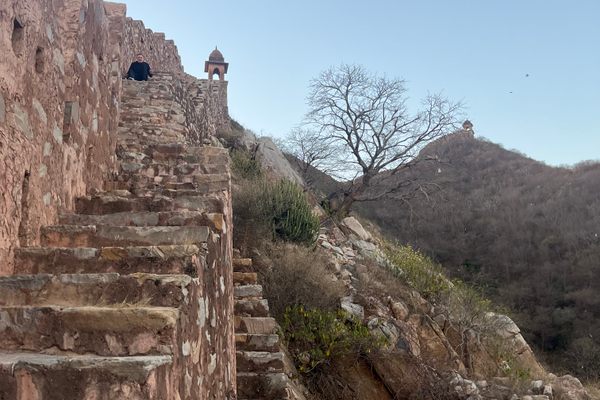Jal Mahal
More than half of this Indian palace is drowned but it looks all the more spectacular for it.
Located in the middle of the Man Sagar Lake, a man-made reservoir created in 1596, the Jal Mahal (or “Water Palace”) only appears to be one story high, although there are four more levels to the building hidden beneath the water.
Although the name translates to “Water Palace,” the building was never intended to be a palace, as such, but was instead conceived as a hunting lodge for the local Raja (King). In the 16th-century, a severe drought spurred the locals to create a dam, creating the lake that submerged the lower portions of the lodge.
During the 18th century, the water-locked lodge was renovated and the lake area was expanded. For a great deal of the temple’s history, visitors were able to take gondolas across the lake waters to visit the historic faux-palace. The rooftop of the structure manages to support foliage and from the shoreline it almost looks like the castle is still in use.
Today the building is inaccessible to tourists, although plans are afoot to convert it into a restaurant. Visitors wishing to see the building will have to suffice with the view from land which is even more spectacular in the evenings when the ancient Water Palace is illuminated as though there is some secret soirée occurring just out of reach.































Follow us on Twitter to get the latest on the world's hidden wonders.
Like us on Facebook to get the latest on the world's hidden wonders.
Follow us on Twitter Like us on Facebook